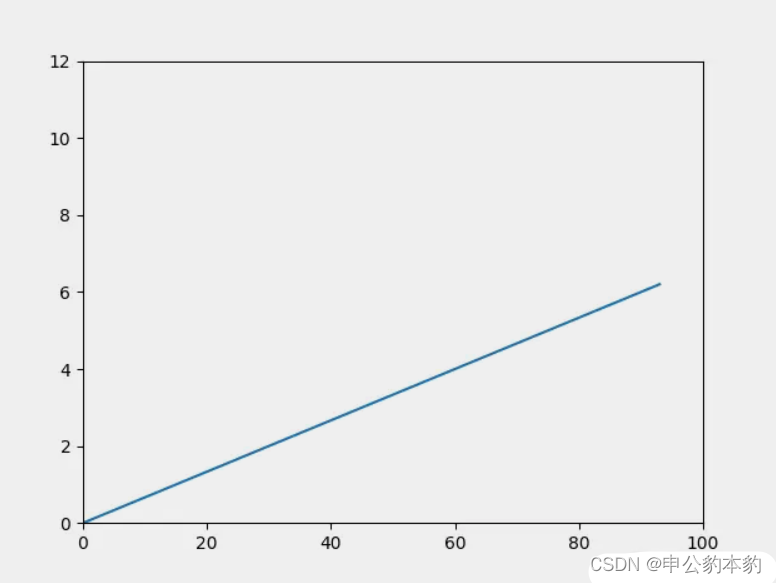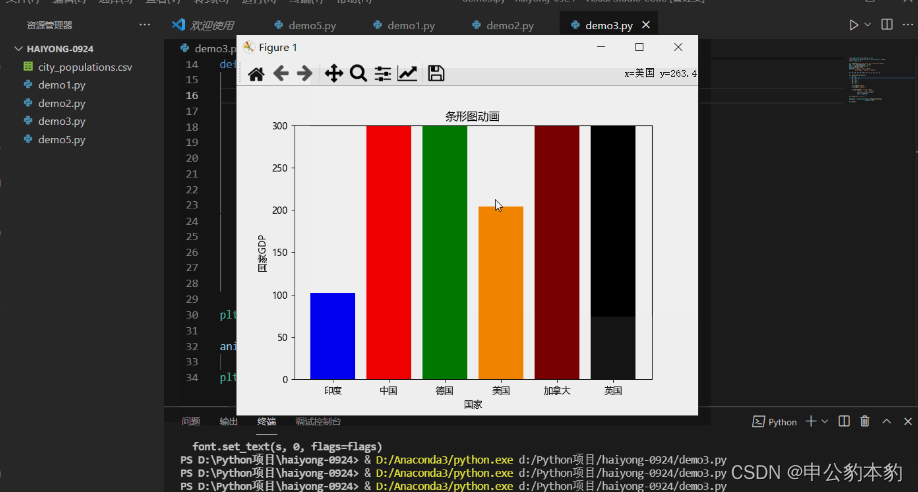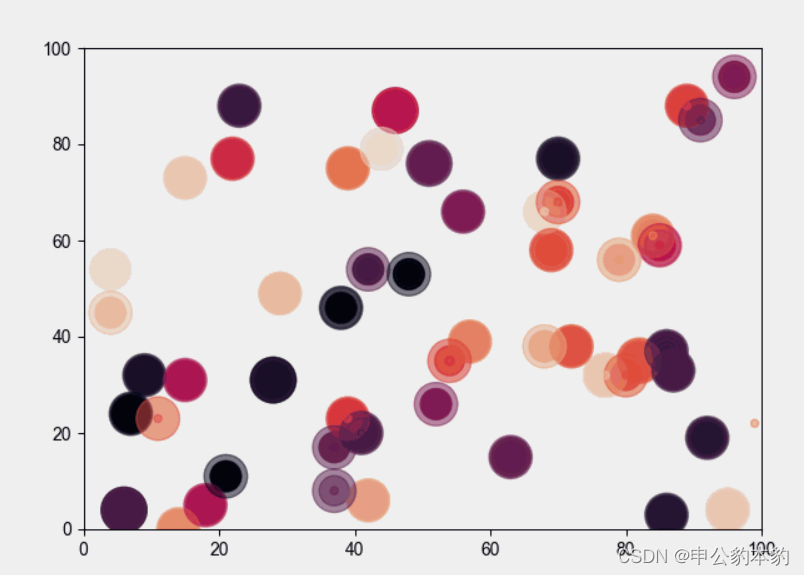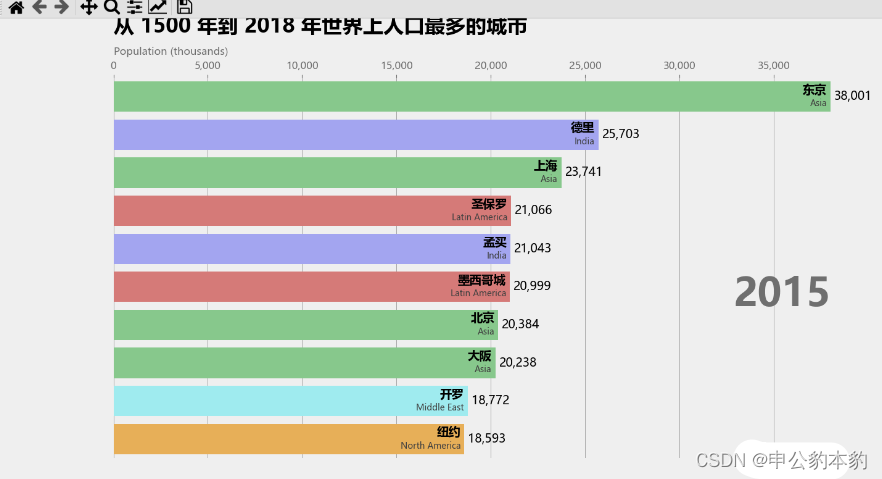在Python中实现条形图动态追赶动画效果 |
您所在的位置:网站首页 › 动态条形统计图 › 在Python中实现条形图动态追赶动画效果 |
在Python中实现条形图动态追赶动画效果
|
动画是提高可视化吸引力和用户吸引度的优秀手段。它能够以有意义的方式展示数据可视化。Python提供了强大的库,使我们能够轻松创建动画可视化。Matplotlib是一个广受欢迎的数据可视化库,通常用于绘制数据图表以及创建基于内置函数的动画。 使用Matplotlib创建动画有两种主要方法: 使用pause()函数使用FuncAnimation()函数🍖 方法一:使用pause()函数在这种方法中,我们使用matplotlib库的pyplot模块中的pause()函数来实现暂停。该函数在程序执行过程中会暂停指定的时间间隔,使动画能够逐帧展示。下面是一个示例,演示了如何使用Matplotlib创建一个简单的线性图,并通过pause()函数设置适当的时间间隔展示动画: 代码语言:python代码运行次数:0复制from matplotlib import pyplot as plt x = [] y = [] for i in range(100): x.append(i) y.append(i) plt.xlim(0, 100) plt.ylim(0, 100) plt.plot(x, y, color='green') plt.pause(0.01) plt.show()输出:  在这里插入图片描述 在这里插入图片描述同样,pause()函数也可以用于在各种图形中创建动画。 🚀 方法二:使用FuncAnimation()函数FuncAnimation()函数不会自行创建动画,而是从我们传递的一系列图形中生成动画。其语法如下: 代码语言:python代码运行次数:0复制from matplotlib.animation import FuncAnimation animation = FuncAnimation(figure, animation_function, frames=None, init_func=None, fargs=None, save_count=None, cache_frame_data=True, **kwargs)现在,我们可以使用FuncAnimation函数创建多种类型的动画。以下是几个示例: 🥋 线性图动画:在这个例子中,我们创建了一个简单的线性图,展示了线条的动画效果。通过FuncAnimation,我们可以定义动画的具体表现形式,然后将其传递给FuncAnimation。 代码语言:python代码运行次数:0复制from matplotlib.animation import FuncAnimation import numpy as np x = [] y = [] figure, ax = plt.subplots() ax.set_xlim(0, 100) ax.set_ylim(0, 12) line, = ax.plot(0, 0) def animation_function(i): x.append(i * 15) y.append(i) line.set_xdata(x) line.set_ydata(y) return line, animation = FuncAnimation(figure, func=animation_function, frames=np.arange(0, 10, 0.1), interval=10) plt.show()输出:  在这里插入图片描述🎻 Python中的条形图追赶动画 在这里插入图片描述🎻 Python中的条形图追赶动画在这个例子中,我们展示了一个条形图动画,每个条形图都有自己的动画效果。 代码语言:python代码运行次数:0复制import numpy as np plt.rcParams['font.sans-serif'] = ['Microsoft YaHei'] fig = plt.figure(figsize=(7, 5)) axes = fig.add_subplot(1, 1, 1) axes.set_ylim(0, 300) palette = ['blue', 'red', 'green', 'darkorange', 'maroon', 'black'] y1, y2, y3, y4, y5, y6 = [], [], [], [], [], [] def animation_function(i): y1 = i y2 = 6 * i y3 = 3 * i y4 = 2 * i y5 = 5 * i y6 = 3 * i plt.xlabel("国家") plt.ylabel("国家GDP") plt.bar(["印度", "中国", "德国", "美国", "加拿大", "英国"], [y1, y2, y3, y4, y5, y6], color=palette) plt.title("条形图动画") animation = FuncAnimation(fig, animation_function, interval=50) plt.show()输出:  在这里插入图片描述🌌 Python中的散点图动画: 在这里插入图片描述🌌 Python中的散点图动画:在这个例子中,我们使用随机函数在Python中创建了一个动画散点图。通过迭代animation_func,在每次迭代时绘制随机的x和y坐标值。 代码语言:python代码运行次数:0复制import random x = [] y = [] colors = [] fig = plt.figure(figsize=(7, 5)) def animation_func(i): x.append(random.randint(0, 100)) y.append(random.randint(0, 100)) colors.append(np.random.rand(1)) area = random.randint(0, 30) * random.randint(0, 30) plt.xlim(0, 100) plt.ylim(0, 100) plt.scatter(x, y, c=colors, s=area, alpha=0.5) animation = FuncAnimation(fig, animation_func, interval=100) plt.show()输出:  在这里插入图片描述🛹 条形图追赶的水平移动: 在这里插入图片描述🛹 条形图追赶的水平移动:在这个例子中,我们使用城市数据集中最高人口的城市创建了一个条形图竞赛动画。每个城市都有自己的条形图,而动画则会在1990年到2018年之间迭代。数据集可以从这里下载。 代码语言:python代码运行次数:0复制import pandas as pd import matplotlib.ticker as ticker from matplotlib.animation import FuncAnimation plt.rcParams['font.sans-serif'] = ['Microsoft YaHei'] df = pd.read_csv('city_populations.csv', usecols=['name', 'group', 'year', 'value']) colors = dict(zip(['India', 'Europe', 'Asia', 'Latin America', 'Middle East', 'North America', 'Africa'], ['#adb0ff', '#ffb3ff', '#90d595', '#e48381', '#aafbff', '#f7bb5f', '#eafb50'])) group_lk = df.set_index('name')['group'].to_dict() def draw_barchart(year): dff = df[df['year'].eq(year)].sort_values(by='value', ascending=True).tail(10) ax.clear() ax.barh(dff['name'], dff['value'], color=[colors[group_lk[x]] for x in dff['name']]) dx = dff['value'].max() / 200 for i, (value, name) in enumerate(zip(dff['value'], dff['name'])): ax.text(value-dx, i, name, size=14, weight=600, ha='right', va='bottom') ax.text(value-dx, i-.25, group_lk[name], size=10, color='#444444', ha='right', va='baseline') ax.text(value+dx, i, f'{value:,.0f}', size=14, ha='left', va='center') ax.text(1, 0.4, year, transform=ax.transAxes, color='#777777', size=46, ha='right', weight=800) ax.text(0, 1.06, 'Population (thousands)', transform=ax.transAxes, size=12, color='#777777') ax.xaxis.set_major_formatter(ticker.StrMethodFormatter('{x:,.0f}')) ax.xaxis.set_ticks_position('top') ax.tick_params(axis='x', colors='#777777', labelsize=12) ax.set_yticks([]) ax.margins(0, 0.01) ax.grid(which='major', axis='x', linestyle='-') ax.set_axisbelow(True) ax.text(0, 1.12, '从 1500 年到 2018 年世界上人口最多的城市', transform=ax.transAxes, size=24, weight=600, ha='left') ax.text(1, 0, 'by haiyong.site | 海拥', transform=ax.transAxes, ha='right', color='#777777', bbox=dict(facecolor='white', alpha=0.8, edgecolor='white')) plt.box(False) plt.show() fig, ax = plt.subplots(figsize=(15, 8)) animator = FuncAnimation(fig, draw_barchart, frames=range(1990, 2019)) plt.show()输出:  在这里插入图片描述🛬 wuhu!起飞! 在这里插入图片描述🛬 wuhu!起飞!如果您从这篇文章中学到了新知识并喜欢它,请收藏并与您的朋友分享。最后,请不要忘记给予❤或📑支持。 |
【本文地址】
今日新闻 |
推荐新闻 |